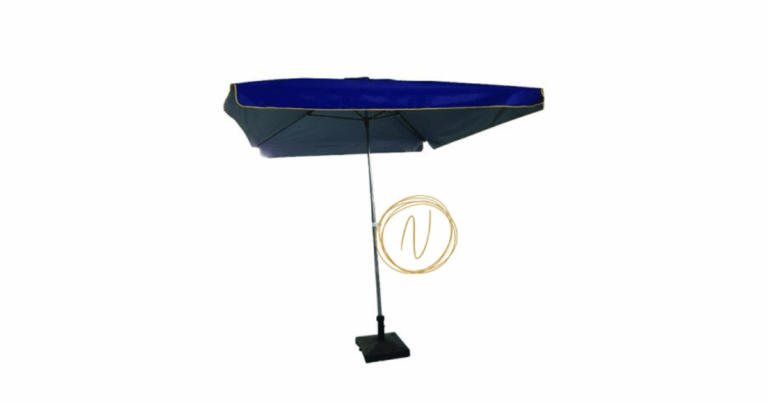The Ultimate Guide to Full Face Helmets: Superior Protection and Comfort for Every Rider
Helmets are among the most important pieces of safety equipment for any rider, whether you’re a motorcyclist, scooter rider, or even a cyclist. A full-face helmet, in particular, offers unparalleled protection, covering not just your head but also your face, providing a comprehensive shield against potential accidents. In this article, we will explore the Full Face Helmet in detail, its benefits, features, and considerations to keep in mind when choosing the right one.
What is a Full Face Helmet?
A full-face helmet is a type of helmet that covers the entire head, from the top down to the chin, with a solid structure designed to protect the face as well as the head. Unlike half or open-face helmets, which leave the chin exposed, full-face helmets are designed to offer comprehensive protection, especially in the event of a crash. The full-face design is one of the safest options, as it ensures that the rider’s head, face, and jaw are all shielded from potential impacts.
Key Features of a Full Face Helmet
1. Complete Coverage
One of the most important features of a full-face helmet is the complete coverage it offers. This includes a robust outer shell that covers the entire head, and a face shield that protects the rider’s face, eyes, and jaw. The design of a full-face helmet ensures that in the event of an impact, the entire head and face are cushioned, reducing the risk of injury.
2. Face Shield
The face shield is an integral part of a full-face helmet. It serves as the first line of defense against debris, dirt, wind, insects, and other elements that riders may encounter. Many face shields are also UV resistant, providing protection from the sun’s harmful rays. Additionally, some face shields are designed to be easily removed or replaced, allowing riders to maintain a clear view while riding in different weather conditions.
3. Impact Absorption
The core of any good helmet is its ability to absorb impacts. A full-face helmet typically includes a multi-layered construction designed to absorb shock and distribute the force of an impact. The inner foam liner is designed to absorb and reduce the impact force, while the outer shell works to deflect debris and protect against abrasions.
4. Aerodynamics
Full-face helmets are often designed with aerodynamics in mind. The smooth, rounded shape of the helmet reduces drag and ensures that the rider experiences minimal resistance when traveling at high speeds. Some models even feature ventilation systems that allow airflow to pass through the helmet, helping to keep the rider cool and comfortable during long rides.
5. Chin Bar
The chin bar is a defining feature of full-face helmets. It provides protection to the rider’s face, especially the jaw, and is an essential part of the helmet’s structure. In the event of an accident, the chin bar helps to reduce the risk of a broken jaw or facial injuries. Many full-face helmets feature a reinforced chin bar for added protection.
6. Ventilation
Full-face helmets are designed to provide ventilation to the rider’s head, preventing the buildup of heat and sweat inside the helmet. This is achieved through strategically placed vents that allow airflow while maintaining the helmet’s safety features. Effective ventilation helps to keep the rider comfortable and focused on the road, especially on long rides or in warm weather.
Benefits of Wearing a Full Face Helmet
1. Superior Protection
The most obvious benefit of a full-face helmet is the superior protection it offers. It covers the entire head and face, offering more safety compared to half or open-face helmets. In the event of an accident, the full-face design significantly reduces the risk of serious injuries to the face, jaw, and skull.
2. Protection Against Weather Elements
Full-face helmets provide excellent protection against weather elements, such as rain, wind, and cold. The face shield protects the eyes from rain and wind, improving visibility and comfort during rides in adverse weather conditions. Additionally, the helmet’s design helps to protect the rider from dust, bugs, and other debris that could distract or harm them while riding.
3. Improved Aerodynamics and Comfort
The aerodynamic design of full-face helmets helps reduce drag and wind resistance, allowing the rider to maintain higher speeds with less effort. Furthermore, the design of full-face helmets often includes padding and a secure fit that improves comfort, especially during long-distance rides. Many riders also appreciate the quiet and smooth ride that a full-face helmet provides compared to other helmet types.
4. Better Noise Reduction
Another advantage of full-face helmets is their ability to reduce noise levels while riding. The enclosed design helps to block out wind noise and other external sounds, allowing the rider to focus on the road. This is particularly helpful during high-speed rides or when traveling on busy roads.
5. Enhanced Aesthetics
Full-face helmets are often designed with sleek, stylish looks that appeal to riders who prioritize appearance. The full coverage design can be customized with different colors, graphics, and patterns, allowing riders to express their personal style while still enjoying top-tier protection.
How to Choose the Right Full Face Helmet
Choosing the right full-face helmet is crucial for ensuring optimal protection and comfort. Here are a few factors to consider when purchasing a full-face helmet:
1. Size and Fit
The most important consideration when buying a helmet is the fit. A helmet that is too loose won’t offer adequate protection, while one that is too tight can be uncomfortable and may cause headaches or other issues. When selecting a full-face helmet, ensure that it fits snugly around your head without causing discomfort. Many brands offer size charts to help you determine the right fit based on your head circumference.
2. Material and Safety Certifications
Full-face helmets are made from different materials, including fiberglass, carbon fiber, polycarbonate, and composite materials. The outer shell should be made from a durable, impact-resistant material, while the inner liner should offer ample shock absorption. Look for helmets that meet safety certifications, such as DOT (Department of Transportation) or ECE (Economic Commission for Europe) standards.
3. Ventilation
As mentioned earlier, ventilation is a key consideration when choosing a full-face helmet. Ensure that the helmet has adequate airflow to keep you comfortable during long rides or in hot weather. Helmets with adjustable vents allow you to control the amount of airflow based on the conditions you’re riding in.
4. Face Shield Quality
The quality of the face shield is another important factor to consider. Look for a helmet with an anti-scratch and anti-fog face shield to ensure that your vision remains clear throughout your ride. Some helmets even offer photochromic or transition face shields, which adjust automatically to changing light conditions.
5. Weight
The weight of a full-face helmet can affect your comfort, especially on long rides. Lighter helmets are generally more comfortable, but they should not compromise on safety. A well-balanced helmet with a lightweight design can provide both comfort and protection.
Conclusion
A full-face helmet is one of the best choices for any rider who values safety, comfort, and performance. With its comprehensive protection, aerodynamic design, and superior comfort features, a full-face helmet ensures that you are well-prepared for your rides, whether you’re commuting, touring, or simply enjoying the open road. When choosing a full-face helmet, be sure to prioritize factors like size, fit, ventilation, and safety certifications to ensure you’re getting the best protection for your ride.
Frequently Asked Questions (FAQs)
1. Why should I choose a full-face helmet over a half or open-face helmet?
A full-face helmet provides complete protection for your head, face, and jaw, which can reduce the risk of serious injuries in the event of a crash. It also protects you from wind, rain, debris, and insects, offering a more comfortable and safer riding experience.
2. Are full-face helmets suitable for all types of riders?
Yes, full-face helmets are suitable for all types of riders, whether you’re on a motorcycle, scooter, or bicycle. They offer superior protection and comfort for both short and long-distance rides.
3. How do I know if my full-face helmet fits properly?
A properly fitting full-face helmet should be snug around your head without causing discomfort. It should not move around when you shake your head, and the chin strap should be tight but not overly restrictive. Always refer to the manufacturer’s size guide when choosing your helmet.
4. How do I maintain and clean my full-face helmet?
To maintain your full-face helmet, regularly clean the outer shell and face shield with mild soap and water. Use a microfiber cloth to avoid scratching the surface. Check the interior padding and clean it with a damp cloth if necessary. Always store your helmet in a cool, dry place to prevent damage.
5. Can I use a full-face helmet for racing?
Yes, full-face helmets are commonly used in racing due to their high level of protection. Racing helmets are typically designed to meet stricter safety standards and provide extra features like ventilation and enhanced aerodynamics to improve performance during high-speed rides.






